Currently, the ceramic tile is one of the most popular materials for the trim of the bathroom. The tile is used to decorate the floor or wall coating. This is due to the fact that these products have high operational qualities, as well as presentable appearance. Tile is durable, copes well with moisture effects, besides, it is enough to care for it.
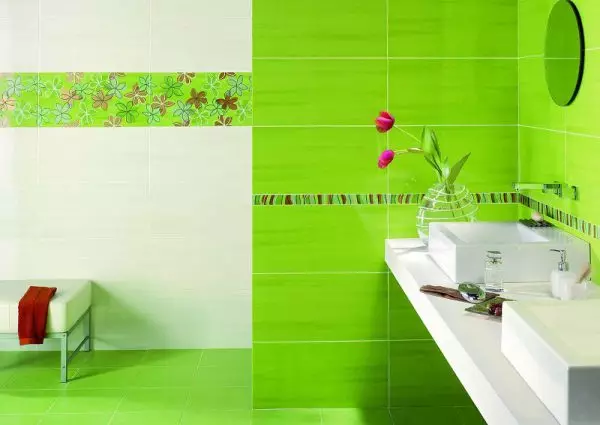
Thus, many believe that the shower facing ceramics can be forgotten about the repair and other problems, however, this is not quite so. Often with time on tiled products, some defects are manifested in the form of cracks. It is almost impossible to hide this problem. Therefore, there is a reasonable question, what happened? Of course, it's not about the tile itself, but the reasons are much deeper.
However, in initially many think that the quality of the tile. In fact, even the good ceramics begins to crack, after a certain time. Causes can be absolutely different, for example, shifts at the very basis. By and large, rarely, when all the blame can be imposed on the unfair manufacturer, but there are such situations that are mainly the reasons lie in another plane. Why do cracks appear and what about it?
Sources of defects
As mentioned above, the initial option is usually considered cracks at the basis of which the tile is laid. Operational conditions in the bathroom are very tough, which is why not every material can withstand them. Often the concrete screed consists of rubble and sand with water evaporating over time. Thus, even after final grazing, cement still dries out, which leads to the appearance of cracks.
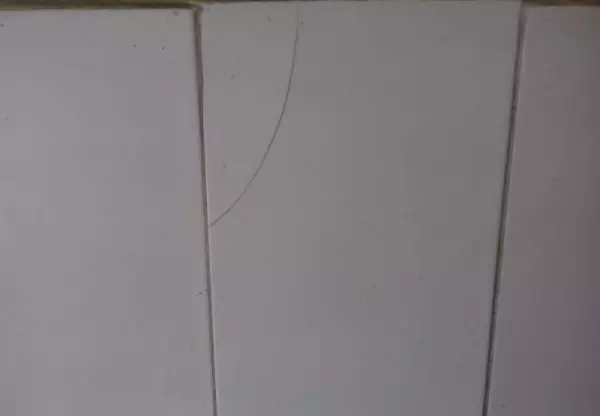
Crack on the tile
The tile lying on the ground turns into one whole and if the crack ran somewhere, it will immediately affect the ceramics. It should be understood that any irregularities or deformation on the screed immediately manifests itself on the finishing material. Even special adhesives are unable to help in this matter. From the point of view, specialists are a normal process, and from the point of view, the consumer is not.
Article on the topic: Wall facing by wild stone - a chic option
By and large, it is almost impossible to avoid this problem, however, it is worth trying. Usually they advise several methods to effectively confront this dilemma, but if you are not a professional-tile, it is unlikely that something will work. Options:
- First, it is necessary to carefully inspect the finished surface the day after it laying. It was then that a person with an experienced look can consider the prerequisites for the formation of cracks. More explicit signs appear about a month after all the work on the application of the screed. Here you can note the naked eye, the outlined defects.
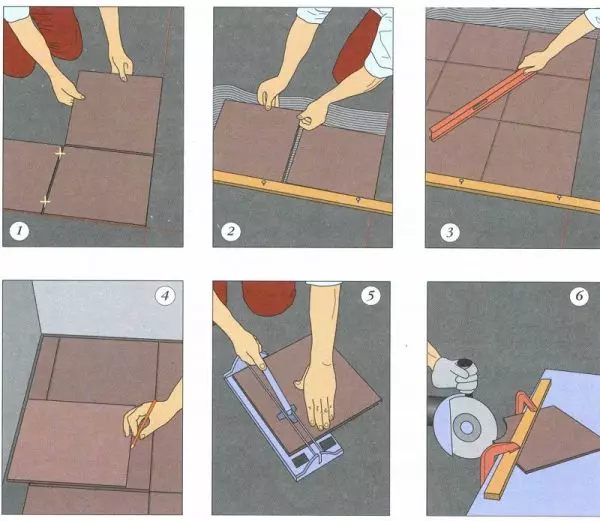
Tile laying scheme
- Secondly, it is necessary to extract the cracks that they do not spread further and did not grow. Carefully processing the base re-only after that you can start the installation of tiles in the bathroom.
- Thirdly, it is worth knowing that putting ceramics to the still low base is always a risk, since after a while it will take again replacing the coating.
By and large, the cracks appear uncontrollable, so no one is insured against them and even several years later. In addition, the change is changed, for example, the wooden will not save from this problem. Untile-free defeches in aggregate with thicker compositions, as well as adhesive substances to adhere to the tile. Under the power of gravity, it will stretch, and shrink until cracked appears.
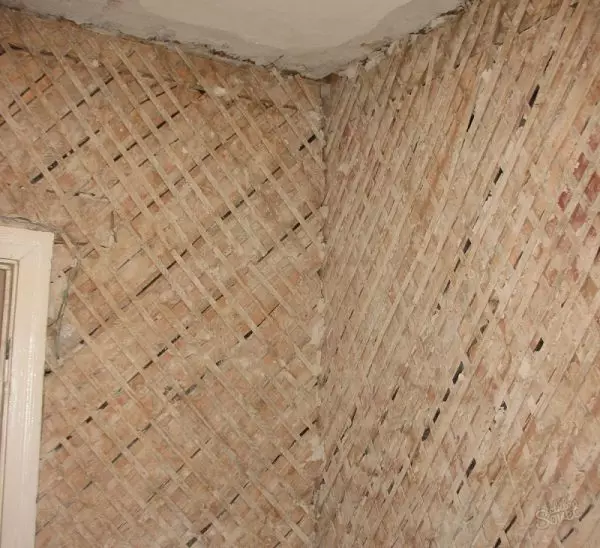
Wooden base for laying tiles on the wall
Thus, ceramics are better not to lay on the surface of wood, as it does not save it from problems, but only adds extra. If you still decided to use a wooden base, then do not be prepared for the rapid appearance of cracks on the tile. The first sign by which it will be possible to judge this - cracking of the thicker seams. In addition, if the new home occurs, then you should be prepared for the fact that the walls during operation will be subjected to shrinkage.
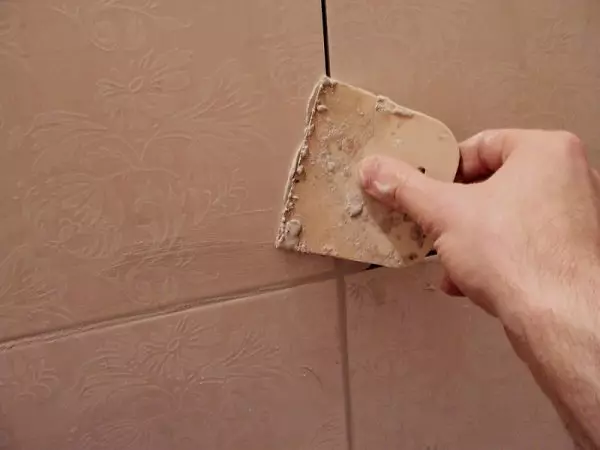
Shutkish seams
Why is ceramics in the bathroom on the wall cracks? First you need to refrain from laying tile products in a new house, it is better to make a finish after a while. However, it may not get rid of cracking problems. In addition, the tile in the bathroom due to the temperature difference is subject to expansion and compression. This is due to the porous material structure that absorbs a certain proportion of moisture.
Water, in turn, can evaporate and freeze. When the ice is formed, the fluid structure is expanding and actually breaks the tile from the inside. If in the cold this phenomenon is noticeable with the naked eye, then the result will be held in the shower due to the lack of low temperatures, but according to the same principle that sooner or later will lead to the wear of ceramic products.
You can withstand this effect using a selection of material, for example, porcelain stoneware. It is much better to carry the contact with water, has a denser structure that does not absorb moisture. The whole secret in the process of its manufacture, which takes place under great pressure of a huge press. Therefore, the porcelain stoneware does not have voids filled with condensate.
Negative factors
The simple question is why the tile cracks in the shower room? For a full response, you need to find all the components of this reason. The bathroom is a rather complicated operating plan. Thus, the materials used to lay walls must have high qualities that will allow them to last a long time. Causes of cracks may be a variety of, but you can and you need to fight. Options:
- Concrete base. Before laying ceramic elements in the bathroom, it is necessary to install the base. The screed is made to an ideally smooth surface, here in principle everything is simple. The main problem begins when the concrete is dried, which begins to shrink. Therefore, it is necessary to wait for the complete readiness of the base, after which it is necessary to correct the flaws in the form of cracks and lay the tile.
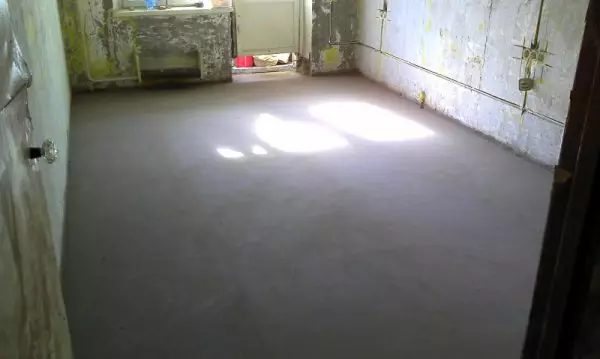
Floor screed
- Foundation made of wood. Over time, the log house has a property to shrink, as well as concrete. For shrinkage, professional builders are removed from 6 months to 1 year. During this time, the tree dries as much as possible, after which finishing works can be carried out. If this is not done and put the tile on another blackwood, then the ceramics under the influence will be cracked.
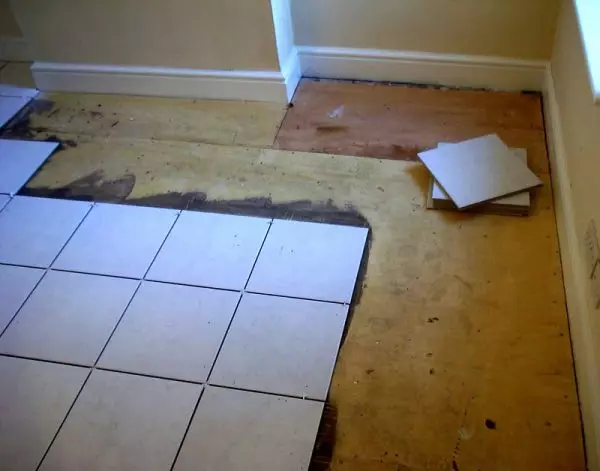
Laying tiles on wooden floor
- Humidity. On the one hand, the tile refers to moisture-resistant coatings, and on the other - no. As already described above, the main drawback of ceramics is its ability to absorb a small percentage of moisture due to its porous structure. While the facial side of the material is reliably protected, the revolt is very vulnerable. When moisture gets into the base, the tile will begin to absorb water, which will result in its cracking.
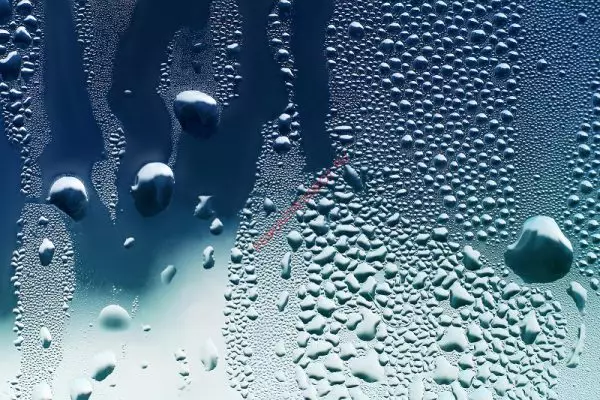
- Temperature changes. Bathroom is noticeable by its complexity in operation. Often, temperature differences can reach a decent level. It negatively affects the tile, as it expands under the influence of heat, and at lower temperatures it is compressed. All this will lead to cracks on the surface of the product.
- Drawing of walls. This process is often typical for any new building, however, there are cases when this happens in ordinary homes for one reason or another. If it is better to wait a couple of years in the construction of a new housing, then no one is insured against the emergence of force-magazine.
- Non-quality glue. This aspect can also lead to sad consequences, which should not be saved on building materials and related mixtures.
Video instruction
Article on the topic: Methods and types of pasting wallpaper of two types
